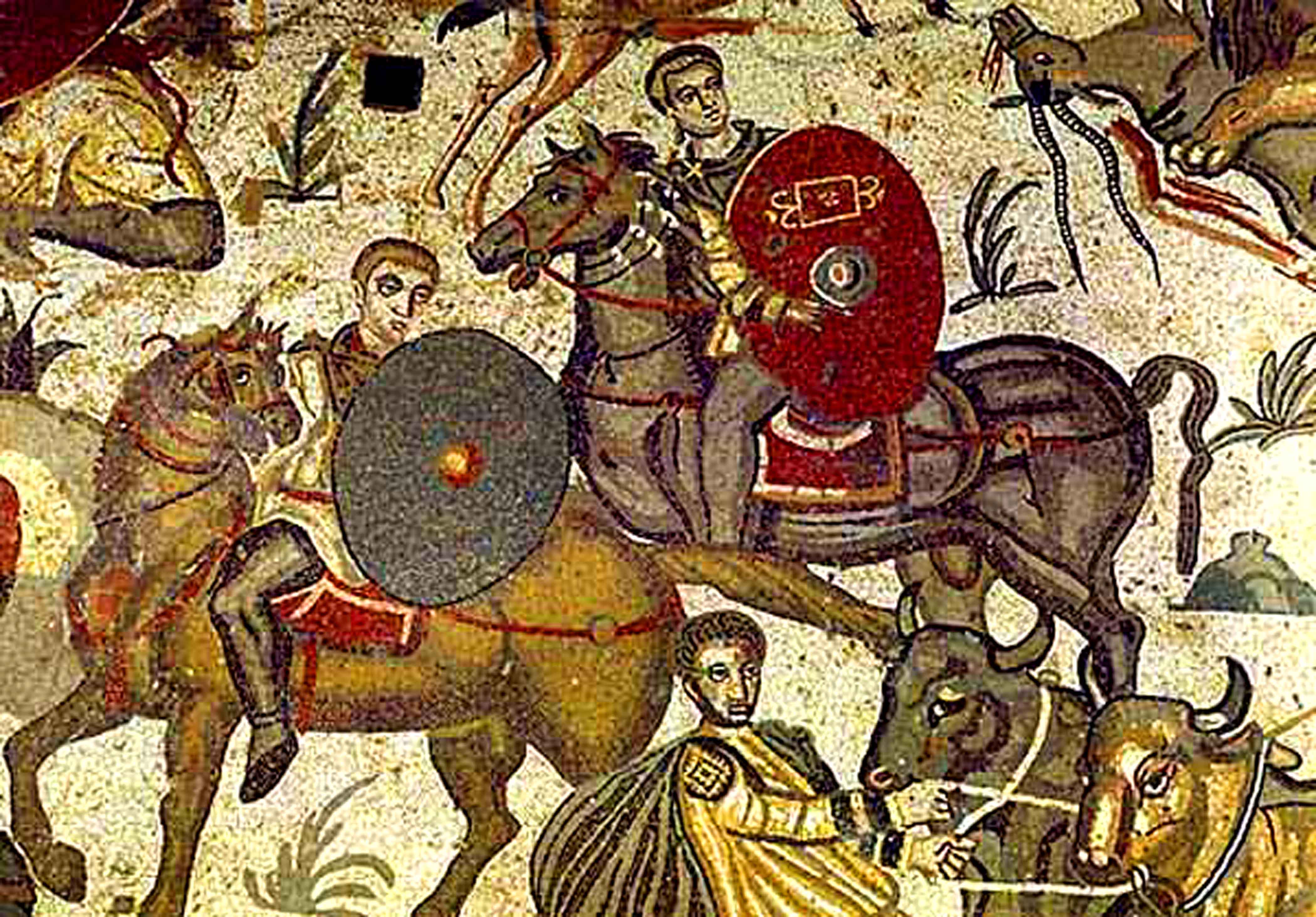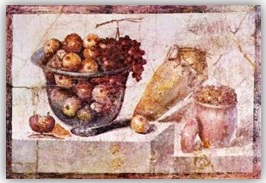De -241 av JC à 410 Perioda Romana
A Roma, ci sono indizi letteraria sull'esistenza di pasta, "Lazanas". Cicerone parla di mambranulas es farina et aqua»: cioè sottili strisce di farina e acqua, cotti in brodo di carne e conditi con formaggio, cannella, pepe e zafferano. Apicio, il più grande cuoco di epoca antica, il primo secolo dC, i chip utilizzati. Egli cita pistacchi nel suo antico trattato di cottura. Il pistacchio è stato introdotto a Roma dall'imperatore Vitellius.
A Rome, il existe des indices littéraires sur l'existence de pâtes, les «lazanas».Cicéron parle de «mambranulas es farina et aqua»: c'est-à-dire de fines bandes de farine et d'eau, cuites dans le bouillon gras, et assaisonnées de fromage, de cannelle, de poivre et de safran. Apicius, le plus grand cuisinier de l’ère antique, au premier siècle de notre ère, servait les pâtes frites. Il mentionne les pistaches dans son traité de cuisine antique. La pistache fut introduite à Rome par l’empereur Vitellius.
In Rome, there are literary clues to the existence of pasta, "Lazanas". Cicero speaks of «mambranulas es farina et aqua»: ie thin strips of flour and water, cooked in meat broth and seasoned with cheese, cinnamon, pepper and saffron. Apicius, the greatest cook of the ancient era, the first century AD, the chips used. He mentions pistachios in its antique cooking Treaty. The pistachio was introduced to Rome by Emperor Vitellius.
A Rome, il existe des indices littéraires sur l'existence de pâtes, les «lazanas».Cicéron parle de «mambranulas es farina et aqua»: c'est-à-dire de fines bandes de farine et d'eau, cuites dans le bouillon gras, et assaisonnées de fromage, de cannelle, de poivre et de safran. Apicius, le plus grand cuisinier de l’ère antique, au premier siècle de notre ère, servait les pâtes frites. Il mentionne les pistaches dans son traité de cuisine antique. La pistache fut introduite à Rome par l’empereur Vitellius.
In Rome, there are literary clues to the existence of pasta, "Lazanas". Cicero speaks of «mambranulas es farina et aqua»: ie thin strips of flour and water, cooked in meat broth and seasoned with cheese, cinnamon, pepper and saffron. Apicius, the greatest cook of the ancient era, the first century AD, the chips used. He mentions pistachios in its antique cooking Treaty. The pistachio was introduced to Rome by Emperor Vitellius.


